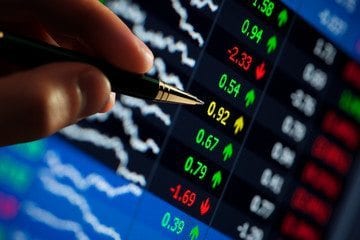
Amid the escalating trade tensions with China, Australia’s currency – the Australian dollar – has enjoyed a temporary bounce. However, as trade tensions deteriorate, the economic data from the country weakened and the US Federal Reserve signaled a more aggressive monetary policy, putting downward pressure on the Aussie.
In March, the US Fed raised its benchmark funds rate target from 0.25% to 0.50%. In September, the Consumer Price Index increased to 7.3% annually, a record high. The RBA has signaled a slowdown in the pace of interest rate hikes, but its monetary policy still has a strong effect on the value of the Aussie. During the past year, the Aussie has lost nearly 5% of its value against the US dollar. This trend may continue as global demand for commodities slows. But if commodity prices rise, it could provide a boost for the Aussie.
Despite this, the AUD/USD has gained 0.71% in the last three months, recouping most of the losses. As a result, a number of analysts have predicted the pair to reach 0.70 by the end of 2027. Meanwhile, ING Group’s FX strategist Francesco Pesole has forecast that the AUD/USD will stay at 0.72 for most of the year. It’s possible that the Fed’s aggressive rate hikes will slow down in the coming weeks.
Another factor driving the AUD/USD is the strength of the US dollar. Commodity prices are rising, which could entice exporters to boost production and help the Australian dollar. Among the commodities that Australia is exporting are natural gas and iron ore. These are both supported by the European Union, which is scouting for cargoes to replace Russian gas.
Other factors affecting the value of the Australian dollar include external trade balance, interest rate differentials, and commodity prices. However, domestic issues have also been a factor in recent months. Retail sales in Australia grew 1.4% in November, which was higher than market expectations.
Oil prices have retreated from $100 per barrel in the past month, but remain at $86. Natural gas prices have also risen. With Australia’s economy weakened, it is likely that oil and natural gas demand will slow down. Likewise, exports from the nation will suffer.
While the risk of a recession in the U.S. is less severe than in Europe, a war in Russia and Ukraine has raised supply concerns. Moreover, a real estate crisis in China is expected to continue to crimp growth. Until more clarity about the COVID rules is revealed, however, markets are reluctant to support a reopening of the country.
Last week, the Reserve Bank of Australia (RBA) slowed the pace of interest rate hikes. The RBA has also signaled that the country will hold off from cutting the cash rate to zero. Instead, the bank expects a “less important downturn” than its previous projection. Nonetheless, the AUD/USD has remained steady as markets awaited the RBA’s next policy decision.
Overall, the Australian dollar continues to be a pro-cyclical currency. Typically, it depreciates during periods of heightened uncertainty and risk aversion. On the other hand, it appreciates during times of positive risk sentiment.
